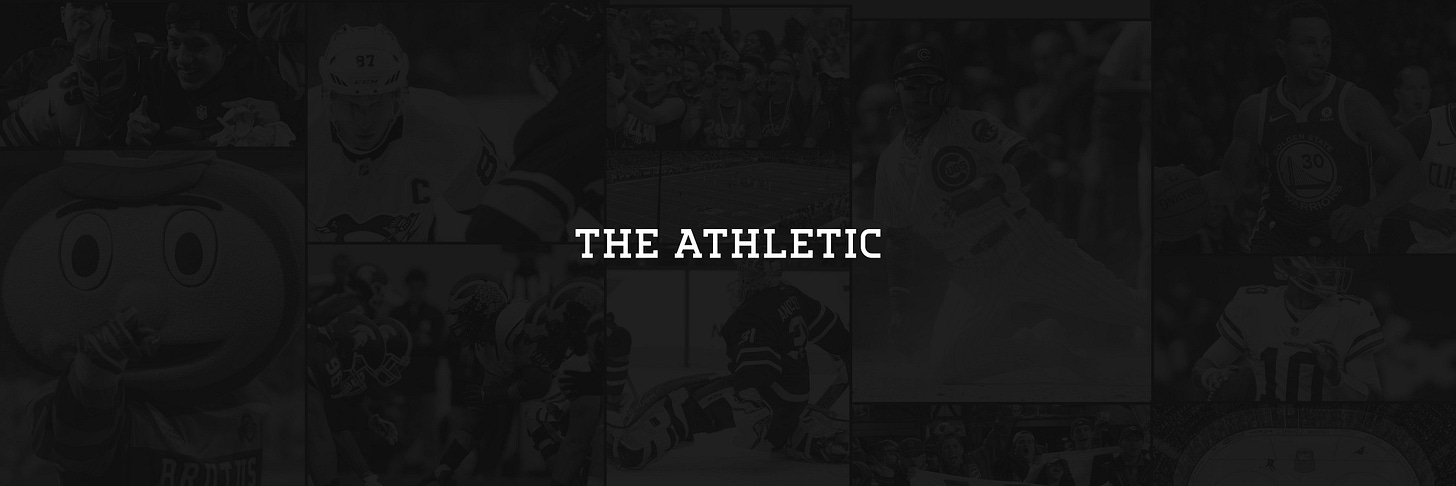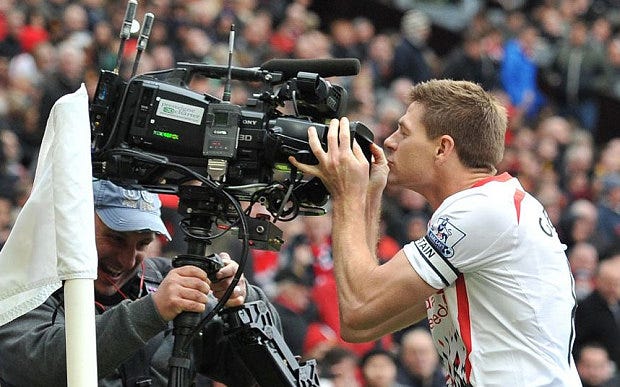Issue Twenty-Seven: The Athletic and the History of the British Football Media
A bit of history for you

It’s been another hectic week for me what with me moving down to London. But I had some thoughts about how The Athletic fits in with the history of British sports journalism that I wanted to get off my chest.
No Progress Report and no Currently Consuming in this newsletter: I’ll try and get back to them for next week. Until then, I’m in London now—let’s hang out?
Have a good week and enjoy the good weather.
Thought of the Week:

I’ve been trying to hawk out a piece for the last few weeks about how The Athletic fits into the history of British football journalism.
The responses to the pitch have ranged from ‘I’m not sure people are interested in football journalism per se’ to ‘The Athletic exist to destroy the industry that I and many of my friends work in’, leaving me with little option but to foist it on you, dear reader.
The history of British football journalism is interesting because of the country’s place in the history of the game itself. With football taking off as a sport in the UK in the mid-19th century—culminating in the first ‘professional’ club, Notts County, forming in 1862 and the Football League emerging a couple of decades later in 1888—the Brits had a bit of a head start with respect to the beautiful game.
Football only really arrived in Italy, Spain and Germany at around the time that the Football League first appeared and, while football was being played in France in the 1860s, it only really took off at the turn of the century.
In 1875, a young man called James Catton was apprenticed at the Preston Herald. With his looser affiliation to the paper he worked for, he was able to cover football and cricket and he made a name for himself covering Preston North End. Before long, Catton had made a name for himself and football journalism had become A Thing.
By the 1890s, with many continental forms of the game still in their fledgling form, British sports journalists would expect space to be provided for them at games with facilities laid on for them to report on the matches.
So popular did these reports become that, within a few years, a new form of football media emerged in the form of the ‘special’: a short evening paper with all of the news from the local team’s games that day.
Although the newspapers were at the forefront of this development, there were a number of sports papers that appeared during this time with such names as The Tissue— a one-sheet racing paper which morphed first into the Prophetic Bell and then the Sporting Chronicle—and the Athletic News.
When the World Wars happened, British sports journalism went in a direction that would influence it through to the present day: it went in-house at newspapers. As leagues around Britain stopped playing during the First World War, dedicated sports media outlets closed down, leaving only the newspapers operative. From here on in, sports coverage was bundled along with other form of news—political, national, economic, etc.—rather than other forms of sports news.
On the continent, though, where sports journalism was in its relative infancy, the World Wars had a much lesser effect. Without the same extent of football coverage in their national presses, the upheaval was not as pronounced.
This allowed a space for dedicated sports outlets after the war and if you trace back the formation of sports outlets in Europe, you will notice a correlation between their emergence and the end of the World Wars.
The German magazine kicker was founded after the First World War and El Mundo Deportivo appeared in 1906 but only assumed its daily form in 1929. Elsewhere, A Bola in Portugal was started in 1945 as was L’Equipe in France. The outlier in this regard is Gazetto dello Sport which emerged in 1896.
As a result, there has been a tradition of dedicated sports outlets in Europe that has simply not existed in the UK because of the impact of the World Wars on the media market.
This is where The Athletic comes in. The conceit of the whole project is this. Given that historical particularities have prevented any recent experiment with genre bundling rather than local bundling, is there a possibility that the right model might be able to unlock this niche? Could we see a successful dedicated sports outlet in Britain in the present day?
The Athletic is an American outlet that has been able to fit into the US market quite easily. Given the geographical immensity of the USA, sports coverage has either been local or bundled per sport. Outlets like Sports Illustrated have existed but also people are used to beat journalists covering their club. Bringing both together—the local approach and a sports bundling model—The Athletic have announced 600,000 subscribers in the last month or so.
The question is: will this approach work with the UK market where the expectation is that there is no sports bundling per media coverage and the coverage that does exist for big teams is national rather than local.
So the inroads that The Athletic are trying to make into the UK sports media are meaningful not simply because a US outlet are trying to capture a UK market. They are also trying to reinvent a market that has existed in this way since the World Wars.
Well, that’s that. We’ve reached the end of Issue Twenty-Seven.
If you have any comments about what you liked/didn’t like, let me know. Also: if you have anything that you think is relevant to what I’m writing/reading, then I would love to hear from you. My email is jonmackenzie@gmail.com and you can find me on Twitter @Jon_Mackenzie.
It should also be pretty easy to unsubscribe from this if you’ve realised you’ve made a grave mistake.
Have a good ‘un.


